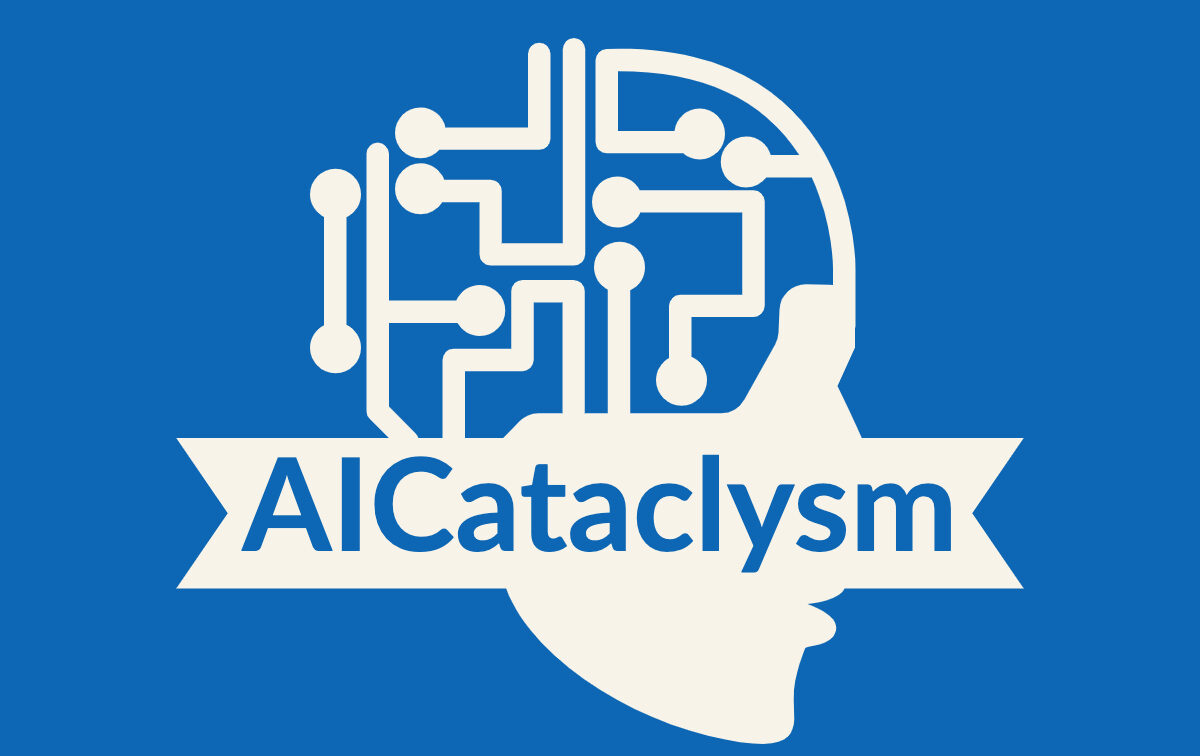Welcome to my article on the enigmatic Q Open Ai. In the world of artificial intelligence, Q Open Ai has sparked curiosity and speculation among AI enthusiasts. Its unique capabilities and potential breakthroughs have piqued the interest of researchers and analysts alike. But what exactly is Q Open Ai?
Q Open Ai is an AI system developed by OpenAI that has garnered attention for its ability to solve basic math problems and reason logically in unprecedented ways. It represents a significant advancement in AI technology, paving the way for more generalized knowledge and critical thinking in AI systems.
Despite its promising potential, many details about Q Open Ai remain undisclosed, adding to its mysterious allure. The AI community is anxiously awaiting further insights to fully understand the capabilities and implications of this groundbreaking technology.
Key Takeaways:
- Q Open Ai is an enigmatic AI system developed by OpenAI.
- It has the ability to solve basic math problems and reason logically.
- Q Open Ai represents a breakthrough in AI technology.
- Many details about Q Open Ai remain undisclosed.
- The AI community eagerly awaits further insights into Q Open Ai.
The Motive Behind Q* and OpenAI’s Intentions
OpenAI’s Q* AI system has generated intrigue and speculation within the AI community. While its true nature and capabilities remain undisclosed, the motive behind Q* and OpenAI’s intentions is a subject of discussion. Some believe that Q* is a strategic move by OpenAI to generate buzz, increase its value and influence, and attract investments. Others see Q* as a significant step towards the development of Artificial General Intelligence (A.G.I.) and an opportunity to solve pressing global challenges. The potential applications of Q* are vast, ranging from advanced problem-solving in various fields to enhancing human-AI collaboration and automation technologies.
Q* has the potential to revolutionize various industries. For example, in healthcare, it could assist in medical research, drug development, and disease prediction. In finance, Q* could improve risk assessment and investment strategies. In legal analysis, it could enhance reasoning and decision-making processes. The uses and applications of Q* are not limited to these examples, and its impact can extend to many other fields.
However, with great power comes great responsibility. The release of such powerful AI systems raises ethical and safety concerns. Unleashing AI systems like Q* without proper safeguards could have unintended consequences. It is crucial to prioritize the ethical development, responsible deployment, and transparency of AI technologies to ensure their safe integration into society.
The Potential Applications of Q*
| Field | Potential Applications |
|---|---|
| Healthcare | Medical research, drug development, disease prediction |
| Finance | Risk assessment, investment strategies |
| Legal Analysis | Reasoning, decision-making processes |
| Various other industries | Advanced problem-solving, human-AI collaboration, automation technologies |
As OpenAI continues to develop and refine Q*, the ethical considerations and responsible deployment of AI systems must be at the forefront. The AI community, policymakers, and society as a whole must actively engage in shaping the future of AI technologies to ensure their positive impact and to address the challenges that lie ahead.
The Mystery Behind Q* – Q-Learning vs. Q* Algorithm
As we delve deeper into the enigma of Q*, it is essential to understand the two theories associated with it: Q-learning and the Q* algorithm from the Maryland Refutation Proof Procedure System (MRPPS). Q-learning is a type of reinforcement learning where an AI agent learns through trial and error, making decisions based on the expected rewards of different actions. On the other hand, the Q* algorithm in MRPPS is a powerful method for theorem-proving in AI, combining semantic and syntactic information to derive logical conclusions.
While the exact nature of Q* remains undisclosed, its capabilities and advancements hold immense potential for the field of artificial intelligence. If Q* is linked to Q-learning, it could enhance AI’s ability to learn and adapt autonomously in complex environments. This development could revolutionize various industries, from healthcare and finance to logistics and automation.
If Q* is related to the Q* algorithm in MRPPS, it signifies a breakthrough in AI’s deductive reasoning and problem-solving capabilities. This advancement could have profound implications in fields like legal analysis and scientific research, where complex data interpretation and logical reasoning are paramount.
Overall, the implications of Q* are far-reaching and could elevate AI to new heights. Whether it enhances learning in complex environments or improves deductive reasoning, the advancements brought about by Q* have the potential to reshape the way we approach AI and its applications.
The Significance of Q* in AI Development
Q* represents a significant advancement in AI development, with the potential to revolutionize various fields. The true nature of Q* remains undisclosed, but its impact can already be felt within the AI community. If Q* is an advanced form of Q-learning, it could enhance AI’s ability to learn and adapt autonomously in complex environments. This would have immense implications for areas such as autonomous vehicles, where split-second decision-making is critical. On the other hand, if Q* is related to the Q* algorithm from MRPPS, it could signify a breakthrough in AI’s deductive reasoning and problem-solving capabilities. This would be particularly impactful in fields that require deep analytical thinking and complex data interpretation.
Regardless of its exact nature, the significance of Q* lies in its potential to push the boundaries of AI technology. It opens up new possibilities for enhancing AI’s capabilities and addressing complex real-world challenges. However, it is essential to consider the ethical, safety, and economic implications of such powerful AI systems. Responsible development and deployment of Q* and similar advancements are crucial to ensure that AI serves humanity’s best interests and contributes to broader societal well-being.
| Advancements | Impact |
|---|---|
| Enhanced learning and adaptability in complex environments | Potential for autonomous vehicles, critical decision-making |
| Improved deductive reasoning and problem-solving capabilities | Significance in fields requiring deep analytical thinking |
| Generalization of knowledge and thinking beyond narrow training | Potential breakthrough for addressing real-world challenges |
The advancement of Q* and similar AI technologies holds promise for transforming industries and empowering human-AI collaboration. However, it is important to tread carefully and consider the broader implications. By leveraging the potential of Q* responsibly and ethically, we can harness its power to drive positive change and shape a future where AI benefits all of humanity.
The Downfall and Rebirth of Open AI
In a stunning turn of events, OpenAI witnessed the firing of its CEO, Sam Altman, and the dismissal of its chairman, Greg Brockman, leading to a period of disarray within the company. The turmoil also caused tensions with Microsoft, a significant partner of OpenAI, as the interim CEO, Mira Morati, took over. This power struggle resulted in competing factions vying for control and influence within the organization.
However, there is hope for OpenAI’s future as Altman and Brockman expressed their willingness to return to the company. Negotiations are currently underway for their potential comeback, along with the appointment of new board members. This unexpected twist has the potential to reshape the trajectory of OpenAI and reignite its mission to develop and advance artificial intelligence technologies.
Amidst the internal upheaval, OpenAI made a mysterious discovery named QAR, adding to the intrigue surrounding the company. While little is known about the exact nature and capabilities of QAR, its emergence has sparked wild speculation within the AI community. The potential implications of QAR could range from enhancing problem-solving and efficiency in AI systems to advancing collaboration between humans and AI.
| Open AI’s Turmoil: | |
|---|---|
| Cause | Firing of Sam Altman and dismissal of Greg Brockman |
| Impact | Period of disarray and power struggle within OpenAI |
| CEO Negotiations | Sam Altman and Greg Brockman express willingness to return |
| QAR Discovery | Mysterious unveiling of QAR, a potential game-changer |
The future of OpenAI hangs in the balance as negotiations unfold and the company grapples with the challenge of restoring stability and unity. The outcome of these discussions will not only shape the course of OpenAI but also have broader implications for the AI industry as a whole. Amidst the uncertainty, OpenAI is determined to regain its footing and continue pushing the boundaries of AI technology, while also addressing the ethical, safety, and societal implications that come with it.
Key Takeaways:
- The firing of OpenAI’s CEO and dismissal of its chairman led to a period of disarray within the company.
- Sam Altman and Greg Brockman expressed their willingness to return to OpenAI, offering hope for the company’s future.
- The discovery of QAR, a mysterious entity, has added further complexity to the situation.
- Negotiations for Altman and Brockman’s return, along with the appointment of new board members, are currently underway.
- The future of OpenAI and its impact on the AI industry remains uncertain, highlighting the challenges and opportunities in the field.
The Mystery Surrounding QAR
Amidst the turmoil at OpenAI, a mysterious discovery named QAR emerged. Little is known about its exact nature and capabilities, leading to wild speculation within the AI community. The potential implications of QAR could range from enhancing problem-solving and efficiency in AI systems to advancing collaboration between humans and AI. However, the uncertainty surrounding QAR adds further complexity to the already tumultuous situation at OpenAI.
QAR has captured the attention of researchers, sparking curiosity and excitement about its potential applications. While its true capabilities remain undisclosed, the AI community eagerly awaits more information to understand the full impact of QAR. Its emergence amidst the power struggles and uncertainties at OpenAI raises questions about the future direction of the organization and its ability to harness the potential of this enigmatic discovery.
The mystery surrounding QAR also highlights the broader challenges faced by the AI industry in terms of transparency and communication. As AI systems become increasingly complex, it is essential for organizations like OpenAI to provide clear and comprehensive information about their developments. This transparency not only fosters trust and confidence within the AI community but also enables informed discussions about the ethical and societal implications of emerging technologies.
The Potential Impact of QAR
Although the exact capabilities of QAR are shrouded in secrecy, there are several potential ways in which it could impact the field of AI. Here are some speculative areas where QAR might make a significant difference:
- Enhanced problem-solving: QAR could revolutionize the way AI systems approach complex problem-solving tasks, enabling them to find more efficient and effective solutions.
- Improved human-AI collaboration: QAR might facilitate better collaboration between humans and AI, allowing for seamless integration and cooperation in various domains.
- Advancement in natural language processing: QAR could lead to breakthroughs in natural language understanding and generation, enabling AI systems to interact with humans more intuitively and effectively.
While these speculations are purely hypothetical at this stage, QAR has the potential to unlock new possibilities in AI research and development. As more information about QAR becomes available, it will undoubtedly shape the future trajectory of AI and its applications.
The Future of Open AI and the AI Industry
As the negotiations continue for the potential return of Sam Altman and Greg Brockman to OpenAI, the future of the company hangs in the balance. The outcome of this process will not only shape the direction of OpenAI but also have broader implications for the AI industry as a whole. The developments surrounding Q* and QAR highlight the rapid pace of innovation in AI and emphasize the need for careful consideration of ethics, safety, and societal impacts.
OpenAI’s actions and decisions will undoubtedly influence the trajectory of AI development and shape the relationship between humans and AI technologies. As we move forward, it is essential to continue fostering collaboration and dialogue among stakeholders, ensuring that AI development serves humanity’s best interests and promotes societal well-being.
Looking at the broader AI industry outlook, the impact of Q Open Ai and similar advancements cannot be understated. These advancements represent significant milestones in AI technology and have the potential to revolutionize various fields. From healthcare to finance and legal analysis, AI systems with enhanced learning, adaptability, and problem-solving capabilities could fundamentally transform and improve numerous industries.
| Benefits of Q Open Ai: | Impacts on the AI Industry: |
|---|---|
| Advanced problem-solving capabilitiesEnhanced learning and adaptabilityPotential for broader application in various industriesEfficiency and automation improvements | Increased competitiveness among AI companiesAcceleration of innovation and technological advancementsPotential for solving complex global challengesShifts in job markets and workforce requirements |
“The developments surrounding Q* and QAR highlight the rapid pace of innovation in AI and emphasize the need for careful consideration of ethics, safety, and societal impacts.”
However, with these advancements come challenges that must be addressed. Ethical considerations, safety precautions, and the potential impact on jobs and society must be carefully evaluated as AI technology continues to progress. Responsible AI development and deployment practices are crucial to ensure that the benefits of AI are shared by all and that potential risks and negative consequences are mitigated.
Ultimately, the future of OpenAI and the AI industry as a whole will be shaped by the decisions and actions taken in the coming months and years. The ongoing developments surrounding Q Open Ai serve as a reminder of the immense potential of AI technology and the importance of responsible and thoughtful development. By navigating these challenges and opportunities with wisdom and foresight, we can shape a future where AI technology enhances human potential, promotes societal well-being, and addresses the world’s most pressing challenges.
The Challenges and Responsibilities Ahead
As the field of artificial intelligence (AI) continues to advance rapidly, it brings with it numerous challenges and responsibilities. The ethical implications of AI development are of utmost importance, as it has the potential to impact society in profound ways. Ensuring AI is developed and deployed in an ethical manner requires careful consideration and proactive measures.
One of the primary concerns is AI ethics. As AI systems become more powerful and autonomous, there is a need to ensure that they are designed and programmed to align with ethical principles. This involves addressing issues such as bias, fairness, transparency, and accountability. AI systems should not discriminate or perpetuate unfair biases, and their decision-making processes should be transparent and explainable. Additionally, mechanisms for holding AI systems and their creators accountable need to be established.
AI safety is another critical aspect that cannot be overlooked. While AI has the potential to bring immense benefits, it also carries risks. It is essential to develop AI systems that prioritize safety and minimize the chances of unintended consequences. This involves rigorous testing, robust error-handling mechanisms, and safeguards to prevent misuse or exploitation.
“With great power comes great responsibility.” – Voltaire
The societal impact of AI is yet another challenge that needs to be addressed. AI has the potential to disrupt industries and reshape the job market. It is essential to consider the potential impact on jobs and develop strategies to mitigate any negative consequences. Additionally, privacy concerns need to be addressed to ensure that AI systems respect and protect individual rights.
| AI Ethics | AI Safety | AI Societal Impact |
|---|---|---|
| Addressing bias and fairness | Ensuring robust error-handling mechanisms | Mitigating potential job displacement |
| Ensuring transparency and accountability | Preventing misuse and exploitation | Protecting individual rights and privacy |
| Promoting ethical decision-making | Developing rigorous testing protocols | Shaping the future of work |
As we move forward in the era of AI, it is crucial to tackle these challenges head-on. The AI community, along with policymakers, industry leaders, and society as a whole, must work together to establish guidelines, regulations, and best practices that ensure AI is developed and utilized for the benefit of all. By addressing the challenges and fulfilling our responsibilities, we can harness the potential of AI while safeguarding our values and the well-being of humanity.
The Myth of AGI and the Reality of AI’s Current State
The concept of Artificial General Intelligence (AGI) has long captured the imagination of researchers and the public alike. AGI refers to the development of AI systems that possess human-like cognitive abilities and can adapt across various tasks. However, it is crucial to distinguish between the myth of AGI and the reality of AI’s current capabilities.
While recent advancements, such as OpenAI’s enigmatic Q* AI system, show promise in expanding AI’s problem-solving and reasoning capabilities, true AGI remains elusive. Current AI systems have limitations and are bound by pre-training data and human-set algorithms. They lack the ability to truly understand context, common sense, and complex human emotions. Therefore, it is important to set realistic expectations about what AI can currently achieve.
Despite its limitations, AI has made significant strides in various domains, ranging from image and speech recognition to natural language processing and autonomous vehicles. However, these advancements are specific to narrow tasks and require extensive training, specific data sets, and human supervision. AI systems are not capable of generalizing knowledge or reasoning beyond their narrow training.
| Artificial General Intelligence (AGI) | Current State of AI | |
|---|---|---|
| Adaptability Across Tasks | Capable of adapting across various tasks and contexts | Limited to specific tasks with extensive training and human supervision |
| Understanding Context | Ability to comprehend complex human emotions, context, and common sense | Lacks true understanding of context, common sense, and complex human emotions |
| Reasoning Abilities | Can reason and think beyond narrow training, approaching human-level reasoning | Relies on pre-training data and human-set algorithms for reasoning |
The Limitations of Current AI Systems
- Dependence on extensive training and specific data sets
- Lack of contextual understanding and common sense
- Inability to reason beyond narrow training
- Insufficient adaptability across tasks
While AI continues to advance and push the boundaries of what is possible, it is vital to recognize the distinction between the myth of AGI and the current reality of AI’s capabilities. We must set realistic expectations and focus on developing AI systems that can address specific tasks effectively, while also considering the ethical and societal implications of AI technology.
As we move forward, it is important to continue pushing the boundaries of AI research and development while acknowledging and addressing the limitations of current AI systems. By doing so, we can harness the potential of AI to augment human capabilities and solve complex problems while ensuring responsible and ethical use of AI technology.
The Role of Humans in Shaping AI’s Impact
Human-AI collaboration plays a crucial role in shaping the impact of AI technology. As AI systems continue to advance, working hand in hand with humans can lead to more effective problem-solving and innovation. By combining the unique strengths of AI systems, such as data processing capabilities and pattern recognition, with human creativity, intuition, and ethical decision-making, we can unlock new possibilities and address complex challenges that neither humans nor AI can tackle alone.
Effective AI technology management is essential in harnessing the benefits of AI while mitigating potential risks. Responsible management involves ensuring that AI systems adhere to ethical principles, data privacy regulations, and fairness standards. It also includes implementing robust governance frameworks that consider the societal impact of AI, encourage transparency in AI algorithms, and promote accountability among AI developers and users.
AI public understanding is key to fostering trust, awareness, and informed discussions about AI technology. By providing accessible and accurate information about AI capabilities, limitations, and potential impacts, we can empower individuals and communities to make well-informed decisions. This understanding also enables policymakers and stakeholders to develop policies, regulations, and guidelines that address the ethical, legal, and societal implications of AI.
“The collaboration between humans and AI is a powerful force that can drive transformative change. It is through this partnership that we have the opportunity to shape AI technology in a way that aligns with our values and priorities, benefiting society as a whole.”- AI Researcher
The Uncertain Path Ahead
As we delve deeper into the world of AI, the path ahead remains uncertain, filled with both opportunities and challenges. The rapid pace of AI development has brought us to a crossroads, where we must carefully navigate the complexities of ethics, safety, and societal impact.
One of the key challenges in AI development is ensuring that the technology aligns with human values and addresses potential risks. As AI systems become more advanced, we must be diligent in evaluating their ethical implications and taking proactive steps to prevent unintended consequences. The responsible development and deployment of AI technologies require a holistic approach, considering not only the benefits but also the potential risks they may pose to individuals, communities, and society at large.
Another challenge lies in determining the direction of AI research. The field of AI is vast and continuously evolving, with numerous possibilities and avenues to explore. It is essential to prioritize research efforts that have the potential to create real-world impact and contribute to the greater good. By directing our research towards solving pressing global challenges, such as climate change, healthcare, and poverty, we can unlock the true potential of AI and harness its power for the betterment of humanity.
The Future of AI: Embracing Uncertainty
While the future of AI may be uncertain, it is also filled with promise. By approaching AI development with wisdom, responsibility, and a commitment to shared values, we can navigate the unknown and create a future that harnesses the potential of AI for the betterment of humanity.
Embracing the Future with Wisdom
In the ever-evolving landscape of AI, responsible development is paramount. As we move forward, we must consider the broader impacts on society, ensuring that ethical AI practices are at the forefront of our efforts. Human-centered design, fairness, transparency, and accountability should guide our every step.
By embracing responsible AI development, we can create systems that augment human potential and address the world’s most pressing challenges. This requires collaboration among stakeholders, including researchers, policymakers, and industry leaders, to shape AI technology for the betterment of humanity.






